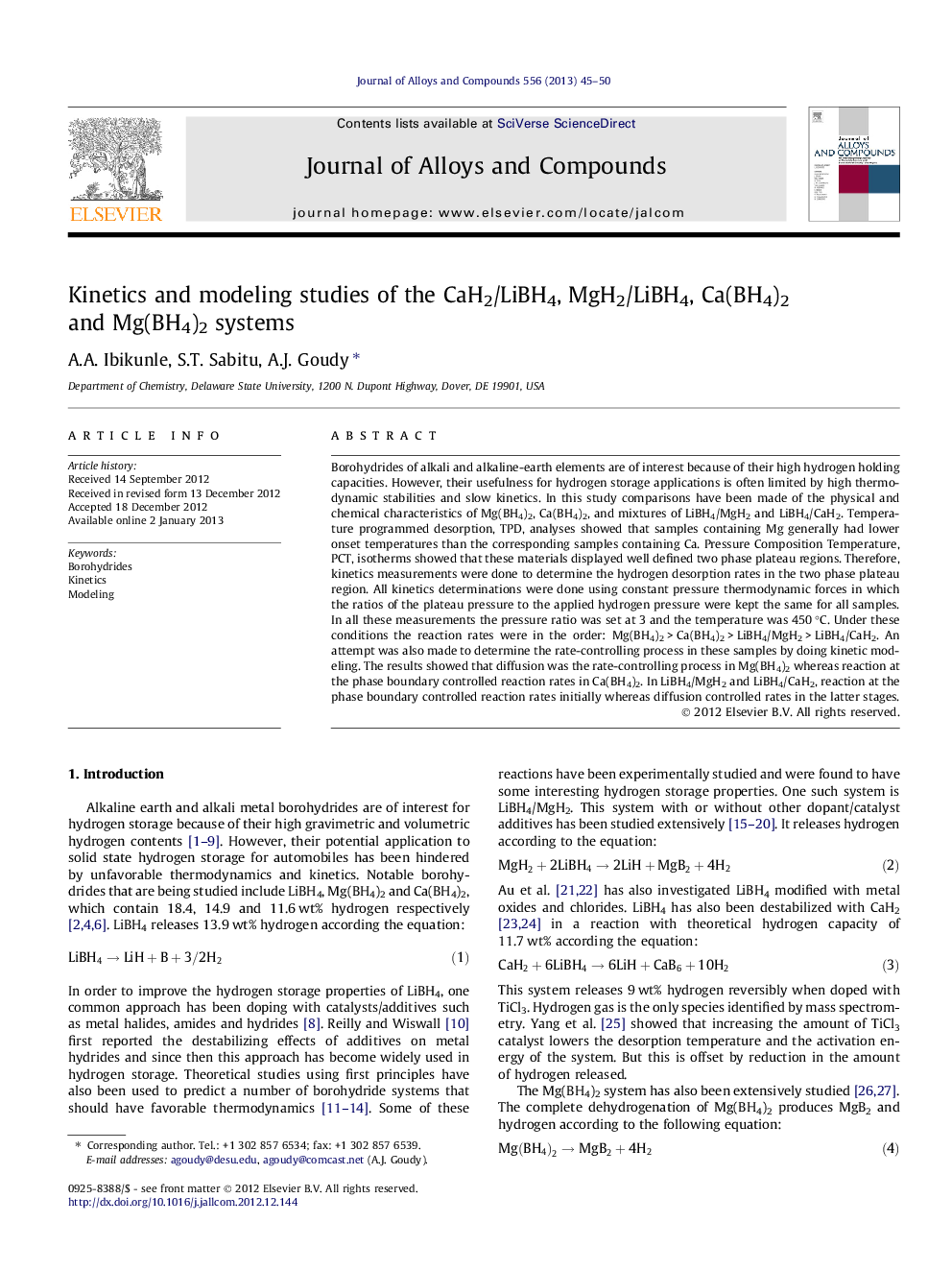| Article ID | Journal | Published Year | Pages | File Type |
|---|---|---|---|---|
| 1614669 | Journal of Alloys and Compounds | 2013 | 6 Pages |
Borohydrides of alkali and alkaline-earth elements are of interest because of their high hydrogen holding capacities. However, their usefulness for hydrogen storage applications is often limited by high thermodynamic stabilities and slow kinetics. In this study comparisons have been made of the physical and chemical characteristics of Mg(BH4)2, Ca(BH4)2, and mixtures of LiBH4/MgH2 and LiBH4/CaH2. Temperature programmed desorption, TPD, analyses showed that samples containing Mg generally had lower onset temperatures than the corresponding samples containing Ca. Pressure Composition Temperature, PCT, isotherms showed that these materials displayed well defined two phase plateau regions. Therefore, kinetics measurements were done to determine the hydrogen desorption rates in the two phase plateau region. All kinetics determinations were done using constant pressure thermodynamic forces in which the ratios of the plateau pressure to the applied hydrogen pressure were kept the same for all samples. In all these measurements the pressure ratio was set at 3 and the temperature was 450 °C. Under these conditions the reaction rates were in the order: Mg(BH4)2 > Ca(BH4)2 > LiBH4/MgH2 > LiBH4/CaH2. An attempt was also made to determine the rate-controlling process in these samples by doing kinetic modeling. The results showed that diffusion was the rate-controlling process in Mg(BH4)2 whereas reaction at the phase boundary controlled reaction rates in Ca(BH4)2. In LiBH4/MgH2 and LiBH4/CaH2, reaction at the phase boundary controlled reaction rates initially whereas diffusion controlled rates in the latter stages.
► Desorption rates were in the order: Mg(BH4)2 > Ca(BH4)2 > LiBH4/MgH2 > LiBH4/CaH2. ► Diffusion was found to be the rate-controlling process in Mg(BH4)2. ► Reaction at the phase boundary controlled desorption rates from Ca(BH4)2. ► In destabilized LiBH4 mixtures rates were initially phase boundary controlled. ► Diffusion controlled desorption rates from destabilized LiBH4’s in latter stages.
